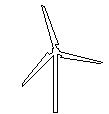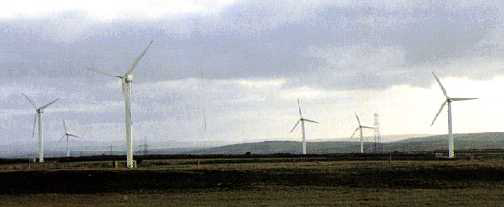

 |
 |
 |
 |
Wind energy development offers opportunities for investment in an environmental friendly energy source. In order to make a profitable investment in this rapidly growing energy sector careful and comprehensive investigations should be performed.
 |
 |
 |
 |
Wind energy economics are strongly dependant on the annual energy yield of the wind farm. That is determined by the wind resource of the site. Therefore, selection of the site is extremely important. In order to select the most suitable location, wind data (frequency histogram and wind rose), digitised topographical map, sheltering obstacle data and roughness data used together to calculate the wind atlas statistics of the area. Using the wind atlas statistics a power density map is prepared. Therefore, the locations having higher wind energy potential are determined. Depending on the complexity of the location selected one or more wind data acquisition system is installed and wind speed and direction data are recorded at least one year. Long term wind data of the site is obtained by numerical modelling using wind data from the site and a nearby meteo-station. Thus, long term mean, mean diurnal variation, monthly and annual variation of wind speed, wind rose and turbulence intensity regime of the site is determined.

There are a wide range of wind turbines available on the market, having various sizes and technical specifications. Selection of the most suitable wind turbine is based on to cost, technical specifications, efficiency, warranty and availability criterion of the turbines.
In order to determine the net energy yield of the wind farm, wind atlas statistics of the region and wind turbine data together with their locations are used. During this determination the wake interactions and flow variations along the site are also considered. Therefore, the individual wind turbine annual energy yield and and the total wind farm yield can be calculated.
Electrical infrastructure have significant effects on wind farm capital cost, energy yield and hence profitability. Therefore, an optimisation for the cables and transformers should be done. Taking into consideration of alternative electrical system layouts together with the site wind speed distribution and performance details of the turbines and using a data base of costs and energy losses for a range of transmission cables and transformers the capital costs and energy losses are evaluated. Imported energy and reactive power are also quantified. A simple cost/benefit exercise then enables the most economical layout to be adopted.
In order to make a prediction of the long term energy yield and to determine the number and size of the turbine it is necessary to evaluate the project financially. Therefore, the energy yield of the wind farm, the total revenue through the sale of electricity, together with net expenditure on operation and maintenance, land rental and other cost for each year of the projects life are calculated. After allowance for depreciation an taxation, annual cash flows are calculated; these can be discounted to calculate the projects Net Present Value, or used to calculate its Internal Rate of Return. Provision for the repayment of a loan should also be included, together with the effects of inflation, as appropriate.
An environmental impact assessment report is prepared. This report has a substance of the environmental impact of the development and measures which can be taken to mitigate any impact:
